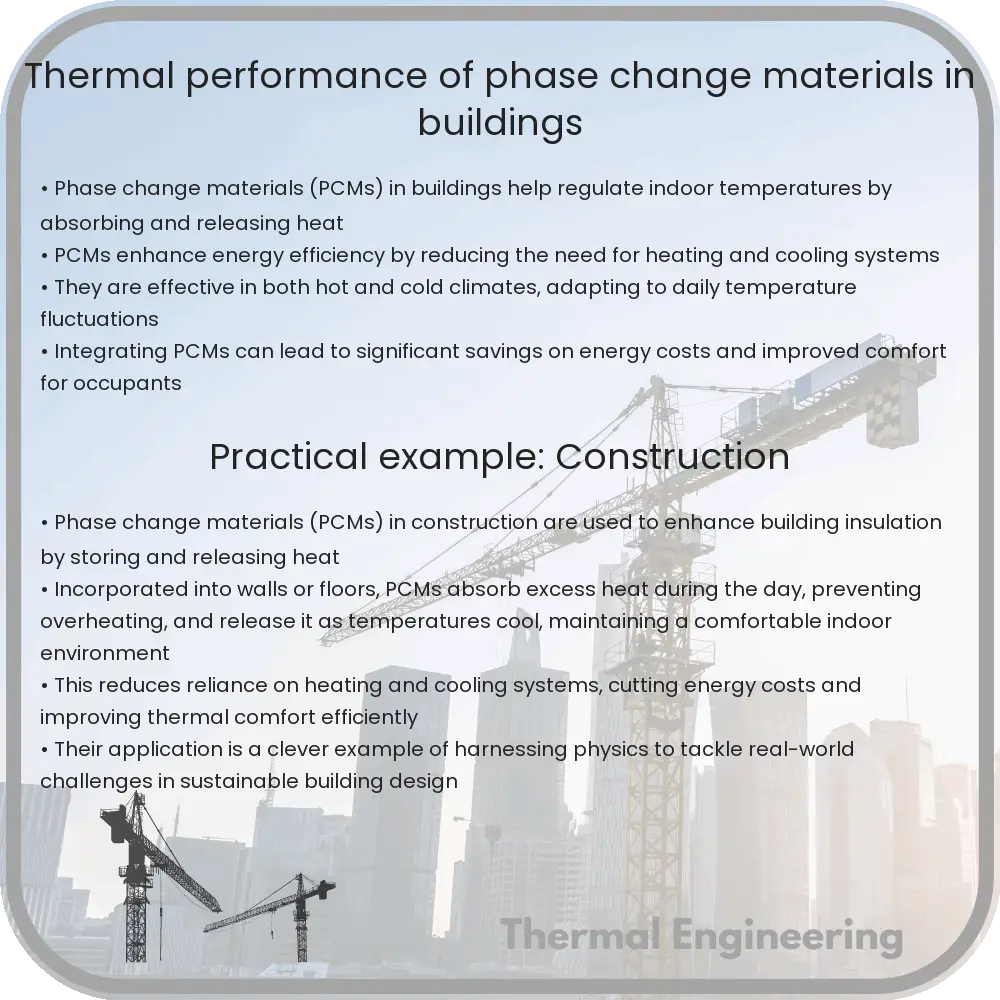Learn about Phase Change Materials (PCMs), which improve building energy efficiency by storing and releasing thermal energy.

Understanding the Role of Phase Change Materials in Enhancing Building Thermal Performance
Phase Change Materials (PCMs) have garnered significant attention in recent engineering studies focused on improving energy efficiency in buildings. These materials have the unique ability to store and release thermal energy during the process of melting and freezing, which can significantly enhance the thermal performance of buildings. This article explores the working mechanism, benefits, types, and practical applications of PCMs in building constructions.
How Do Phase Change Materials Work?
PCMs work based on the principle of latent heat. When these materials reach their melting point, they absorb a large amount of heat from the environment without showing a considerable increase in temperature. This process is known as the absorption of latent heat. Conversely, when the temperature drops, PCMs release the stored heat as they solidify, thereby maintaining a more stable indoor temperature.
The formula for latent heat \( L \) involved in the phase change is defined by:
\[ Q = m \times L \] where \( Q \) is the total heat absorbed or released, \( m \) is the mass of the PCM, and \( L \) is the latent heat of fusion or solidification.
Benefits of Using PCMs in Buildings
- Energy Efficiency: By moderating indoor temperatures, PCMs can reduce the reliance on conventional heating and cooling systems, thus lowering energy consumption and costs.
- Improved Comfort: PCMs contribute to maintaining a constant indoor climate, which can enhance comfort levels for occupants.
- Reduced Carbon Footprint: Lower energy consumption directly contributes to reduced greenhouse gas emissions, aligning with sustainable building practices.
- Versatility: PCMs can be integrated into various building materials like wallboards, floors, and ceilings or even used in HVAC systems.
Types of PCMs Used in Buildings
Based on their phase change temperature and application, PCMs are categorized mainly into three types:
- Organic PCMs: Includes paraffin waxes and fatty acids, known for their chemical stability and minimal supercooling.
- Inorganic PCMs: Comprises salt hydrates which offer higher latent heat per unit volume but might suffer from phase segregation and corrosion issues.
- Bio-based PCMs: Extracted from agricultural sources, these are considered environmentally friendly but may have lower thermal conductivity.
Practical Applications in Building Construction
PCMs can be effectively used in several parts of a building to optimize thermal performance:
- In Walls: Incorporating microencapsulated PCMs into drywall or plaster can help regulate indoor temperatures by absorbing excess heat during the day and releasing it during cooler nights.
- As Thermal Mass in Floors: Using PCM-infused floor tiles can assist in managing heat loads and enhance thermal comfort with less fluctuation in floor temperatures.
- In Ceiling Panels: Ceiling panels equipped with PCMs can prevent the rise of hot air to the ceiling, reducing cooling demands especially in multi-storey buildings.
- Within HVAC Systems: Integrating PCMs in HVAC systems can reduce peak load and improve system efficiency by leveraging the thermal storage capacity of PCMs.
Conclusion
Phase Change Materials represent a cutting-edge solution in the field of building engineering, offering a potential pathway to more sustainable and efficient building designs. By leveraging their unique thermal properties, PCMs help in creating more resilient and energy-efficient habitats, crucial in the face of global energy challenges and climate change.
As research continues and technologies advance, the application of PCMs in buildings is expected to expand, further unlocking their potential and contributing to sustainable urban development.